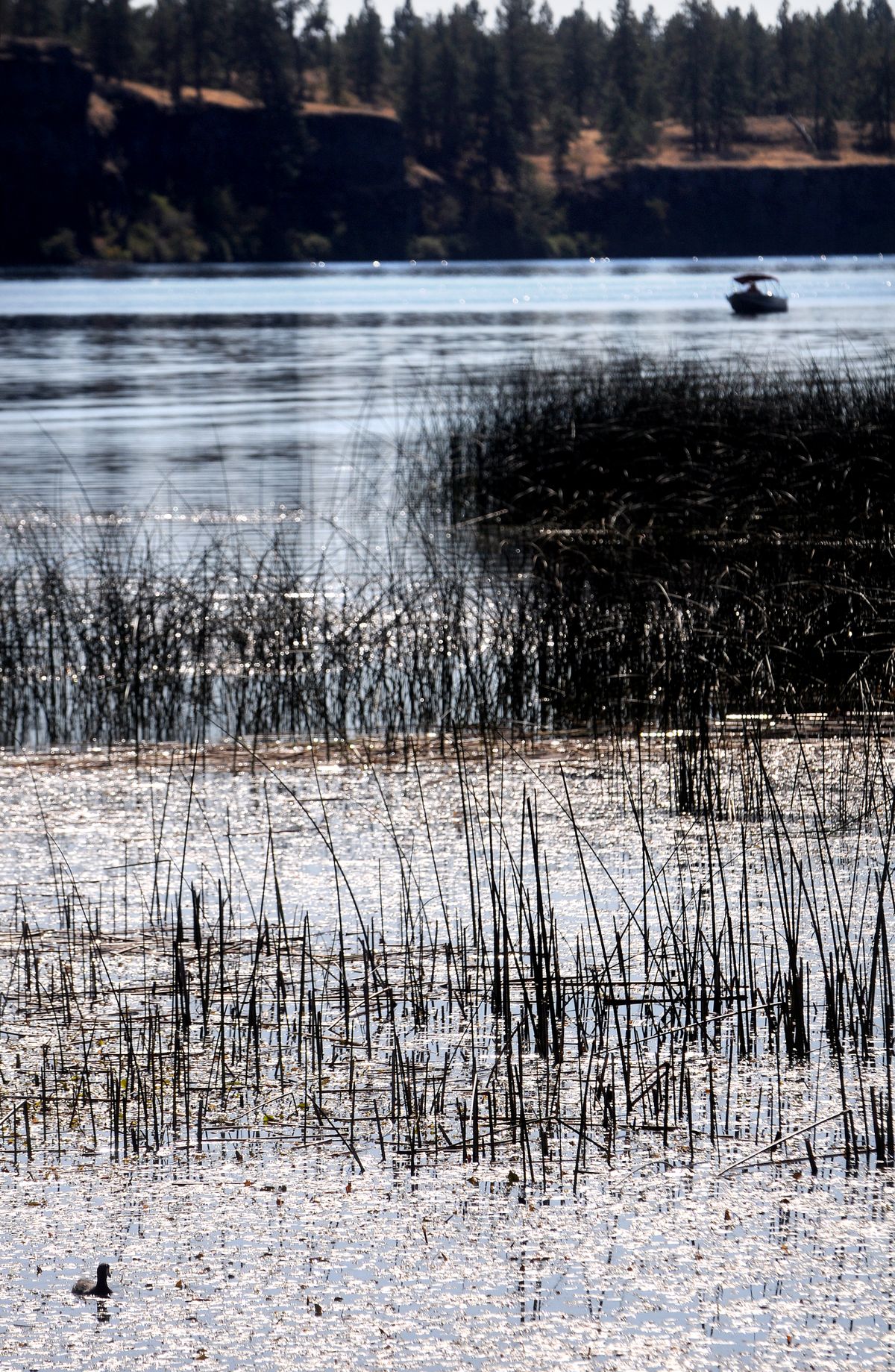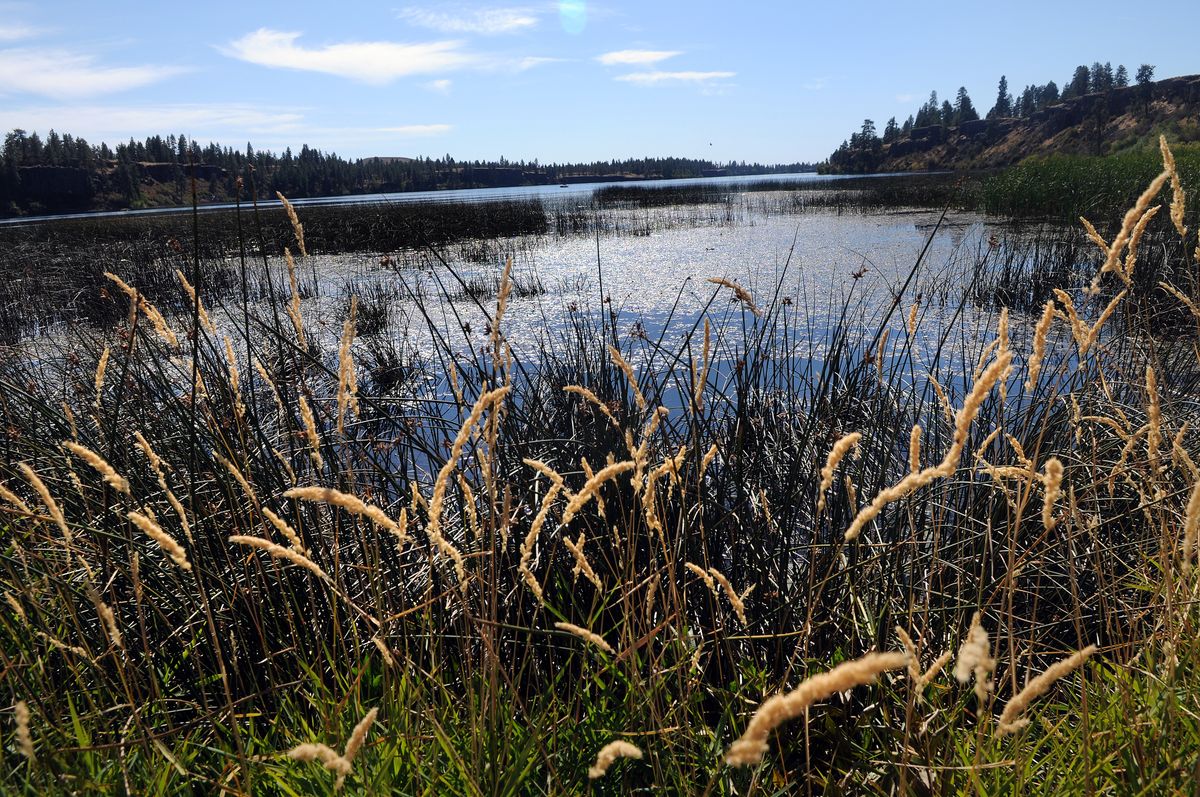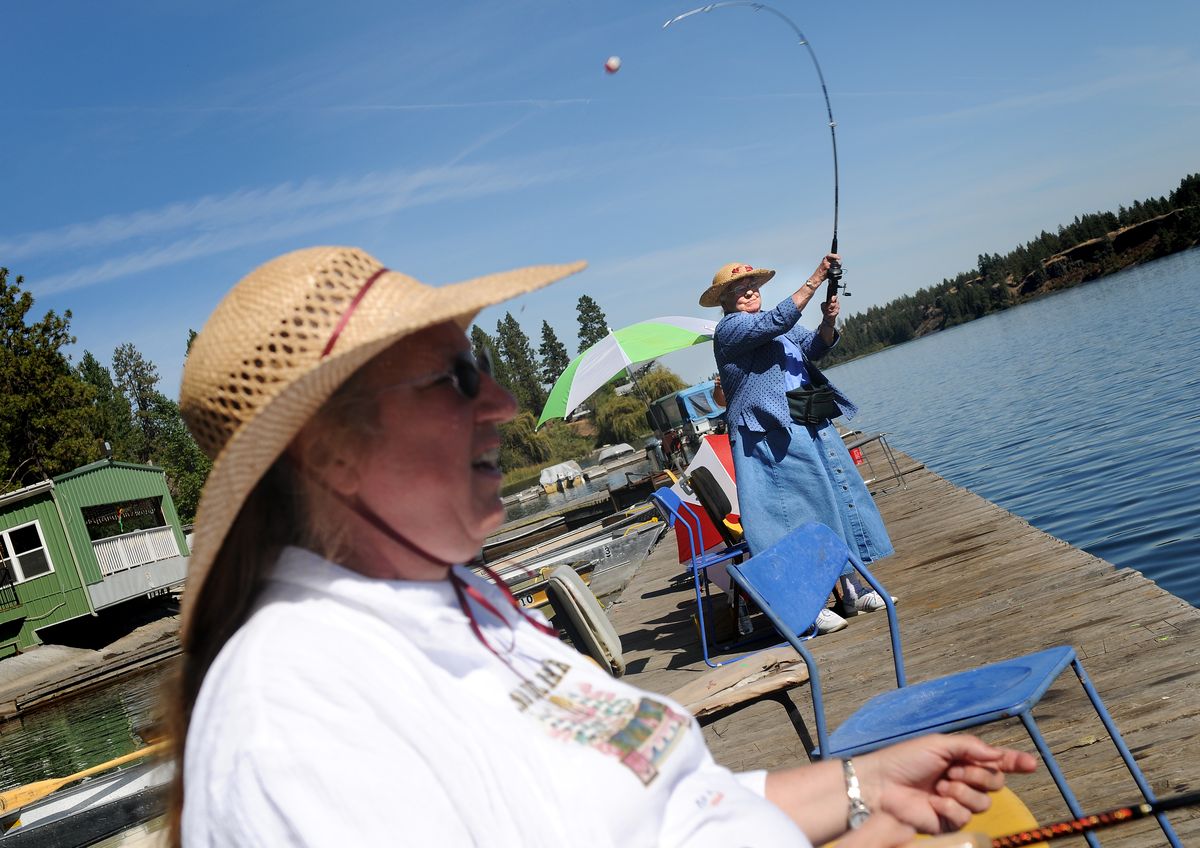Eroding confidence
State threatens to take over county shoreline plan
Bev Reid and her aunt Dorothy Snethen, of Kennewick, fish from the dock of Bunkers Resort on Williams Lake south of of Cheney on Monday afternoon. (Rajah Bose / The Spokesman-Review)
Spokane County’s efforts to craft new regulations for 750 miles of shorelines along rivers, lakes and streams are too little, too late, according to the Washington Department of Ecology, where officials are prepared to intervene and may end up rewriting portions of the county’s shoreline master plan.
In 2004 the county received $300,000 in state grants to update its 33-year-old plan. The county was supposed to adopt a new shoreline master plan by January 2007.
In addition to running nearly two years late, the draft plan lacks the buffers and development setbacks needed to protect the shoreline’s natural functions, said Brian Farmer, Ecology’s section manager for shorelines in the agency’s Spokane field office.
He said the state took the unusual step of alerting Spokane County that Ecology will finish the plan if the county doesn’t draft a more suitable one by the end of the year.
“With all the focus on cleaning up the Spokane River and the current development pressures, it’s critical that we get this right,” Farmer said.
Rich ecological communities occur where the water meets the land. Shorelines provide important habitat for fish; migration routes for birds and other wildlife; and diverse plant life, Farmer noted. Through interconnected wetlands, they also filter silt from the water and provide for flood control.
To protect shorelines’ natural functions, counties are required to regulate development within 200 feet of the high-water mark.
“I’m very sympathetic that we need to protect these resources,” Spokane County Commissioner Bonnie Mager said Monday. However, “I think there’s more than enough blame to go around” for the county missing the 2007 deadline.
The county points to Ecology for the tardiness of the plan, saying Ecology’s staff didn’t provide substantive input on the draft plan until three years into the planning effort. The Department of Ecology disagrees. Farmer provided a written list of staff contacts with the county planning department that dates to 2003.
How to best protect shorelines is another area of dispute.
Spokane County spent the $300,000 cataloging its shorelines – assessing which were pristine, which were degraded and which would benefit from rehabilitation. Farmer said the county should take those designations and develop clear standards for how many feet of native vegetation must be left along the shoreline and how far buildings should be set back from the water.
That’s the “science-based” approach, according to Farmer.
He said the shoreline ordinance should also match the county’s critical areas ordinance, which was adopted in June. The critical areas ordinance recommends buffers of 100 and 250 feet along some streams.
“It’s important for the public … to have clear and realistic expectations of what the regulations are,” Farmer said.
The county took a different approach. The draft plan keeps a 50-foot minimum building setback that was part of the 1975 shoreline master plan, but says developers also have to show that their projects won’t diminish the shoreline’s ecological function if they want to build within 200 feet of the high-water mark.
“It’s a very high bar to meet,” said Jim Falk, an associate planner with Spokane County.
Developers would have to hire experts from a consulting firm retained by the county. “Hopefully, it will be a truly objective analysis of the project,” Falk said.
However, the county is probably ready to compromise on standardized buffers and setbacks, given recent staff reductions in the planning department, Mager said. As part of budget cutbacks, staff positions were reduced from 60 to 39 through layoffs and attrition.
“My preference would be to beef up the planning staff, so we could do the site-by-site analysis,” Mager said. But the site analysis is more time-consuming for staff, she noted, and enforcement of native vegetation buffers and building setbacks is already a problem. The department has two enforcement officers. They’re so busy they only have time to respond to complaints, Mager said.
Farmer said his agency has other concerns with the draft ordinance. More than 20 lakes should be added to county’s shoreline master plan, according to Ecology officials. Many of the county’s lakes have “ecologically intact shorelines,” and the county should ensure they remain protected, agency officials said in the letter to the county.
The letter cites Williams Lake near Cheney as an example of a “forested coulee lake” with shorelines that include intact Ponderosa pine forests, shrub-steppe plant communities, and wetlands that provide habitat for a variety of wildlife.
“These conditions are found at many other glacial scour lakes and coulee lakes through the county and they are not adequately represented in the draft (plan),” said the 2007 letter, which was written by Doug Pineo, Ecology’s shorelines specialist in Spokane.
Ecology also wants Spokane County to prohibit private docks on all streams, requiring community docks instead. The current plan recommends community docks, but the recommendation has been “universally ignored over the past 31 years,” the letter said.
Farmer said Ecology wants to reach an accord with the county.
“We’re hoping we can get their cooperation in doing this,” Farmer said. Unless county officials support the new shoreline plan, it will be difficult to get good enforcement, he said.


